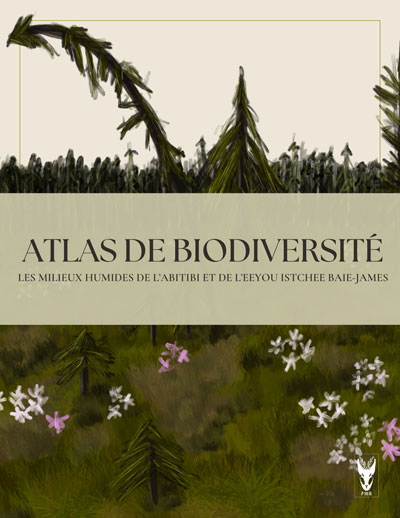Are there books that you can suggest for this section? Write to your favourite research professional!
CEF Reference Centre - Books
An inventory of books recommended by CEF scientists and professionals.
Accueil de CEF-Référence | Articles | Logiciels | Autres ressources web
Ecology
Identification guides
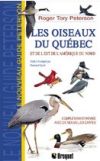
•Publications gouvernementales ![]() The Birds of Quebec and Eastern North America - Peterson Guide
The Birds of Quebec and Eastern North America - Peterson Guide
by Roger Tory Peterson, 2004, Broquet
- This identification guide is perfect for beginners in ornithology. Its arrows indicating characteristic traits of each species permit rapid and easy identification. Updated distribution charts show the range of each species, including nesting and wintering areas. A book that belongs in the hands of all beginners and those of experienced field ornithologists. (SB)
Ornithology
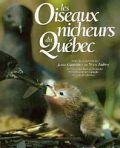
•Wikipedia Book Source ![]() Atlas des oiseaux nicheurs du Québec
Atlas des oiseaux nicheurs du Québec
by Jean Gauthier and Yves Aubry, 1995, Montreal: The Quebec Association of Ornithology Groups.
- This work is the culmination of thousands of field observations, and brings together more than 5000 references. It will give you precise information on the biology and ecology of species which you are likely to find in Quebec. (SB)
Mycology
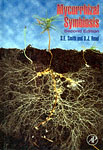
•Amazon ![]()
•ULaval ![]() Mycorrhizal symbiosis
Mycorrhizal symbiosis
by S.E. Smith and D.J. Read, 1997, 2nd edition, Academic Press, New York, NY
- This work provides an exhaustive review of various mycorrhizal types, their structures, their development, their physiology and their ecology. It covers the transport of nutrients, the role of mycorrhizas in ecology and their applications in the environment and their interactions with pollutants. One should also note the evolutionary aspects of the mycorrhizal synthesis. This book is one of the most cited in the field and must be consulted by those who are interested in mycorrhizas. (AG)
Database management
Access
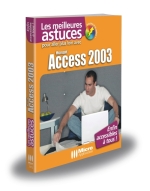
Les meilleures astuces, en couleurs, pour Microsoft® Access 2003
by Hervé Inisan, 2005, Micro Application, 148 pages, ISBN:2-7429-6373-1
- This book offers numerous tips, some better than the others, to further one's ability to use Microsoft Access 2003. After having toured through the tricks and short-cuts for planning and organization of the data, the work shows many easy ways to structure and use tables, to construct requests and forms, to calculate and automate states, to carry out the first steps in programming, to work in group... A work that should not be missed if you wish to improve your facility with Microsoft Access 2003. (DL)
EndNote
- Voici le manuel d'utilisation d'EndNote, toutes vos questions concernant le formatage et l'utilisation d'EndNote trouveront leurs réponses dans cet énorme manuel de plus de 550 pages ! Vous y trouverez aussi quelques subtilités vous permettant d'éviter des heures de corrections ! (SB)
Spatial information
General
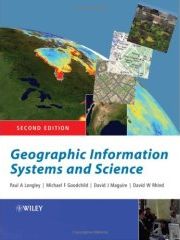
•Wikipedia Book Source ![]()
•Amazon ![]()
•ULaval ![]() Geographic Information Systems and Science
Geographic Information Systems and Science
by Paul A. Longley, Michael F. Goodchild, David J. Maguire, David W. Rhind, 2005, Wiley, 536 pages
- Definitively one of the best books on the subject. A very general vision of what is geographical information and why it is important. This book explains the basis for the concept of geographical information sciences (GIScience), as developed by Goodchild. If there is a one book that can help you to grasp the multiple facets of geographical information and to comprehend its techniques and its associated concepts, it's this one. It will not teach you how to use GIS, but it presents a general but complete portrait of the concepts associated with their use. (PR)
ArcGIS
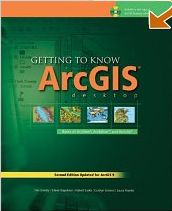
•Wikipedia Book Source ![]()
•Amazon ![]()
•ULaval ![]() Getting to Know ArcGIS Desktop: The Basics of ArcView, ArcEditor, and ArcInfo Updated for ArcGIS 9
Getting to Know ArcGIS Desktop: The Basics of ArcView, ArcEditor, and ArcInfo Updated for ArcGIS 9
by Robert Burke, Eileen Napoleon, Tim Ormsby, 2005, ESRI Press, 588 pages
- One of the best books to start with ArcGIS. While the best documentation of ArcGIS is obviously that which accompanies the software, this book offers another point of view and is very well organised. It is an excellent complement for those who have experienced difficulty with on-line help in ArcGIS or those who prefer a paper copy. Take care to get the most recent edition of this document.(PR)
Modelling
Population matrix models
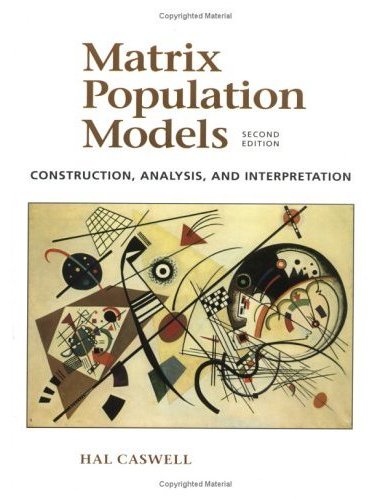
•ULaval ![]() Matrix Population Models: Construction, Analysis, and Interpretation
Matrix Population Models: Construction, Analysis, and Interpretation
by H. Caswell, 2001, 2nd edition, Sinauer Associates, Sunderland, MA
- This work covers a rather broad range of useful matrix models in population studies in ecology and conservation biology. It should be stressed that this book requires a certain level of mathematical aptitude. Nevertheless, it remains a recommended tool for population ecologists who wish to use parameter estimates for making projections with regard to the persistence of populations. (MM)
Statistics
General statistics
- This document summarizes graphical and numerical methods for univariate analysis and normality test, and illustrates how to test normality using SAS 9.1, STATA 9.2 SE, and SPSS 14.0. (SB)
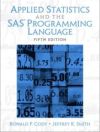
•Amazon ![]() Applied Statistics and the SAS programming language
Applied Statistics and the SAS programming language
by Ronald P. Cody and Jeffrey K. Smith
- This book is the bible for the beginners in SAS, as it enables you to start from scratch, all the while building up an understanding of the software through concrete examples of the various procedures. This book should be in the library of every lab that has a site-license. It is also very useful for advanced users as a memory refresher regarding the many subtleties of this programming environment. (SB)
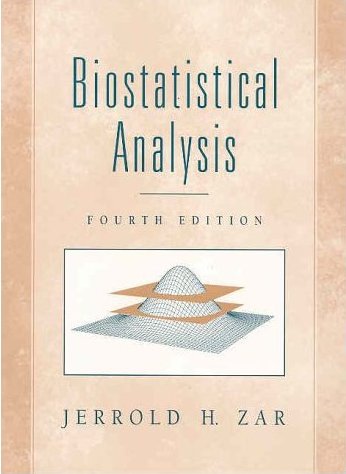
Biostatistical Analysis
by Jerrold H. Zar, 1998, 4th edition, Prentice Hall
- This book is a good starting point for those who want to become more familiar with basic statistical methods. Beyond the basics, Zar covers a broad range of conventional analyses, such as t-tests, one- and two-factor ANOVAs, complete randomised blocks, linear and multiple regression, and contingency tables, as well as some less conventional methods, such as analysis of directional data. This book is strongly recommended for biologists, as it contains numerous examples of basic analyses which illustrate the application of various methods. (MM)
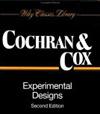
•Amazon ![]() Experimental Designs
Experimental Designs
by W.G. Cochran & G.M. Cox, 1992, 2nd edition, John Wiley & Sons Canada
- The bible for statistical planning of experiments. Discussion of different experimental designs (randomised blocks, split-plots, Latin-squares, etc.), replication, precision, missing replicates and incomplete designs, repeated measures, analysis of covariance, response surfaces, etc. (SD)
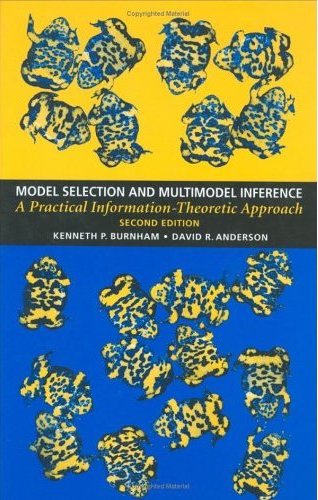
•ULaval ![]() Model Selection and Multimodel Inference: A Practical Information-Theoretic Approach
Model Selection and Multimodel Inference: A Practical Information-Theoretic Approach
by K.P. Burnham, and D.R. Anderson, 2002, 2nd edition, Springer, 488 pages
- In science, one tries to explain natural phenomena as effectively as possible (one wants a good model), but also as simply as possible (one does not want too variables in the model). It is precisely the kind of problem that most of us face when performing analyses in ecology (e.g., multiple regression): which variable must we include or exclude from the model? Burnham and Anderson discuss several interesting aspects that relate to the formulation of assumptions and to the selection of models, particularly using Akaike's information criterion (AIC). Moreover, they present a multi-model approach whenever several plausible models can explain the data. This book is strongly recommended for those involved with modelling, and particularly for researchers working with capture-mark-recapture models. (MM)
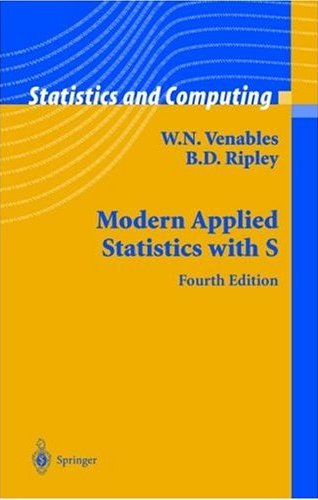
Modern Applied Statistics with S
by W.N. Venables, B.D. Ripley, 2002, 4th edition, Springer, 495 pages
- In this book, one finds little theory, but a multitude of tools that can be applied to the analysis and the pictorial display of data in S-PLUS and R. Venables and Ripley present the commands necessary to carry out analyses from the simplest to the most complex. These analyses include generalised linear models, non-linear and smoothing (LOWESS) regression, neural networks, regression trees, mixed models, some multivariate analyses, temporal and spatial analyses, as well as optimisation problems. This work is strongly recommended to whomever wishes to maximise their use of S-PLUS and R software. (MM)

•ULaval ![]() Randomization, Bootstrap and Monte Carlo Methods in Biology
Randomization, Bootstrap and Monte Carlo Methods in Biology
by B.F.J. Manly, 1997, 2nd edition, Chapman and Hall, New York, 399 pages
- This second edition of Professor Manly's book is a good introduction to the techniques of resampling, with many examples from biology. One finds chapters that introduce the reader to randomisation tests, the bootstrap, the jacknife, as well as Monte Carlo simulation. These techniques are then used in the context of regression as well as the analysis of distance matrices, time series, spatial data, and multivariate analyses. It is a good resource for people considering resampling approaches and who wish to know their strengths and weaknesses.(MM)
Analysis of variance (ANOVA) and generalised linear models (GLM)
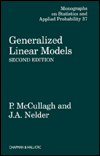
•ULaval ![]() Generalized Linear Models
Generalized Linear Models
by P. McCullagh, and J.A. Nelder, 1989, 2nd edition, Chapman and Hall, 511 pages
- The publication of this book revolutionised data analysis by uniting various models into the same family, i.e., generalised linear models. The latter go well beyond cases where one has a dependent variable that follows a normal distribution (e.g., ANOVA, linear regression). Indeed, as it is often the case in ecology, one finds models that are adapted specifically for data that follow other distributions, such as the Poisson (e.g., Poission regression), binomial (e.g., logistic regression), negative binomial or gamma. Although thorough and very useful, this book could include certain basic concepts in statistics. (MM)
Multivariate analysis/Ordination
- Comment analyser des données à l'aide de CANOCO, ce manuel vous expliquera comment procéder ! (SB)
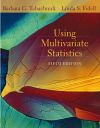
•Amazon ![]() Using multivariate statistics
Using multivariate statistics
by Barbara Tabachnick and Linda S. Fidell, 2006, 5th edition, 1008 pages
- A book that clearly explains multivariate analysis and which provides the programs necessary to conduct the analysis of your data in SAS, SPSS and SYSTAT. Canonical analyses will seem much clearer to you after reading this book! (SB)

•Amazon.ca ![]() Numerical Ecology, 2nd English edition
Numerical Ecology, 2nd English edition
by Legendre, P. & Legendre, L., 1998, Elsevier Science, Oxford
- This book, published by two eminent Quebec scientists (and brothers!), is the bible of multivariate exploratory methods as used in ecology. It covers correspondence analysis (simple, canonical, partial, detrended), principal components analysis, redundancy analysis, classification analysis, analysis of spatial patterns, as well as other techniques. (SD)
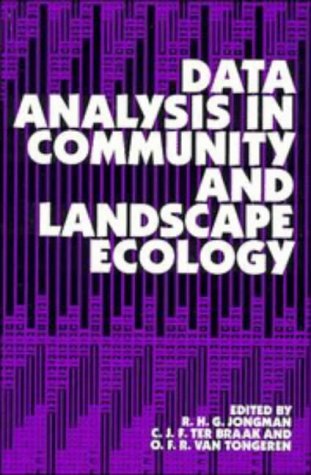
Data Analysis in Community and Landscape Ecology
Edited by R.H.G. Jongman, C.J.F. ter Braak, and O.F.R. van Tongeren, 1995, Cambridge University Press, 299 pages
- This book provides a good introduction to multivariate analyses. The first part of the book deals with regression (linear, logistic, Poisson), which then leads the reader to the techniques of ordination. Among the techniques presented, detailed presentations are made for correspondence analysis (CA), detrended correspondence analysis (DCA), canonical correspondence analysis (CCA), redundancy analysis (RDA), canonical correlation and cluster analysis. Many examples appear throughout the book that are implemented with the programme CANOCO, and which illustrate the interpretation of results with the aid of biplots. (MM)
Spatial analysis
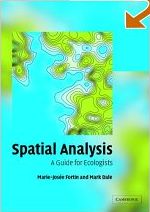
•Amazon ![]()
Spatial Analysis: A Guide for Ecologists
by Marie-Josée Fortin and Mark Dale, 2005, Cambridge, 365 pages
- This book covers a range of spatial statistical methods that are available for analysing ecological data and suggests useful approaches for graduate students and researchers in applied sciences who wish to become familiar with spatial analyses in ecology. (MD)
Models incorporating probability of detection

•ULaval ![]() Analysis and Management of Animal Populations: Modeling, Estimation, and Decision Making
Analysis and Management of Animal Populations: Modeling, Estimation, and Decision Making
by Byron K. Williams, James D. Nichols, and Michael J. Conroy, 2002, Academic Press, San Diego, CA, 817 pages
- This work can be regarded as the "bible" of the techniques for estimating demographic parameters of animal populations. This book presents a complete and up to date range techniques for estimating parameters, such as population size, survival probabilities, and immigration probabilities, in very clear language. Assumptions of each model are presented, important details of experimental design are included, and numerous examples are presented throughout the book, which makes it an essential resource for those wishing to study animal populations in natural environments. (MM)
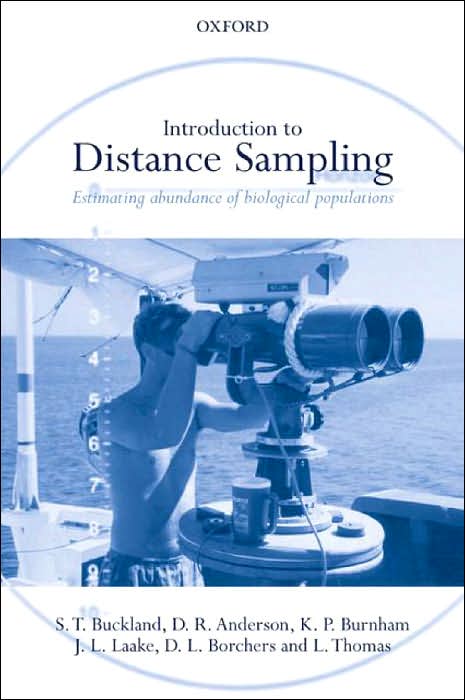
•ULaval ![]() Introduction to Distance Sampling: Estimating Abundance of Biological Populations
Introduction to Distance Sampling: Estimating Abundance of Biological Populations
by S.T. Buckland, D.R. Anderson, K.P. Burnham, J.L. Laake, D.L. Borchers, and L. Thomas, 2001, Oxford University Press, New York, 432 pages
- Buckland et al. present techniques appropriate for the analysis of data generated in distance sampling designs. They present two major types of designs. The first consists of point sampling, where distances of individual animals from an initial sample point are recorded. With the second design, data are collected along a transect, where distances of individuals from the transect are recorded. Employing these two methods makes it possible to estimate detection functions (which decreases as individuals move away from the observer), and from these functions, estimate abundances corrected for probability of detection. The book is well written and the authors have provided many examples to the reader that aid in understanding these techniques. This book is recommended to those wanting to estimate animal species abundances along transects or sample points, while accounting for the probability of detection. (MM)
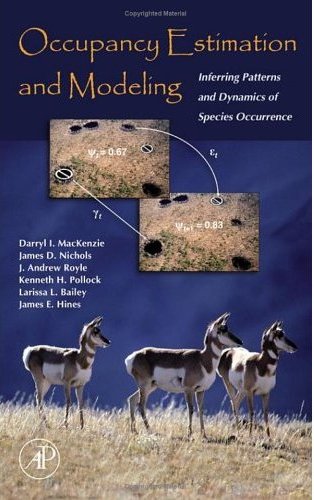
•Amazon ![]() Occupancy Estimation and Modeling: Inferring Patterns and Dynamics of Species Occurrence
Occupancy Estimation and Modeling: Inferring Patterns and Dynamics of Species Occurrence
by D.I. MacKenzie, J.D. Nichols, K.H. Pollock, L.L. Bailey, and J.E. Hines, 2006, Academic Press, San Diego, CA, 324 pages
- A very good book regarding analyses of site occupancy, which is a family of methods that allow species presence to be estimated at a series of locations, while accounting for their probabilities of detection. MacKenzie et al. provide many concrete examples of the analysis and interpretation of results generated by these types of analyses. The authors use very clear language throughout the text, with a minimum of jargon, which makes it accessible to all ecologists wishing to use the techniques. This book is strongly recommended. (MM)
Telemetry

•ULaval ![]() Analysis of Wildlife Radio-tracking Data
Analysis of Wildlife Radio-tracking Data
by G.C. White and R.A. Garrott, 1990, Academic Press, London, 383 pages
- This book provides a great deal of advice regarding the design as well as the analysis of animal telemetry data necessary for the estimation of home range size, habitat selection, movement and survival. In its pages you will also find various approaches to estimating population size. The manual describing the programme SURVIV, for capture-mark-recapture analyses, can found in the appendix, along with many examples drawn from the text. The book would be a great aid to people wanting to familiarise themselves with telemetric approaches to data collection and subsequent analysis of the data which are generated by these techniques. (MM)
Scientific writing & philosophy
The Art of the Thesis
by Michel Beaud and Daniel Latouche, 1988, Les Éditions du Boréal, 176 pp.
- An excellent book for all those beginning their programmes in graduate studies. Much practical advice is given regarding the choice of topic, organisation of chapters, methods and many questions relating to the development and completion of of a research project are addressed. ISBN-9782890522176 (2890522172) (MD)

How to write and publish a scientific paper, 6th edition.
by R. A. Day and B. Gastel, 2006, Cambridge University Press.
- Reading this book BEFORE you start writing your first article will save a great deal of time. (Comments sent to MM by H. Asselin)
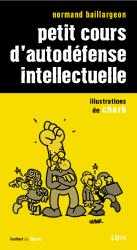
by Normand Baillargeon, 2005, Les Éditions Lux, 344 p. (in French)
- Rédigé dans une langue claire et accessible et illustré par Charb, cet ouvrage constitue une véritable initiation à la pensée critique, plus que jamais indispensable à quiconque veut assurer son autodéfense intellectuelle. On y trouvera d’abord un large survol des outils fondamentaux que doit maîtriser tout penseur critique : le langage, la logique, la rhétorique, les nombres, les probabilités, la statistique etc. ; ceux-ci sont ensuite appliqués à la justification des croyances dans trois domaines cruciaux : l’expérience personnelle, la science et les médias. ISBN: 978-2-89596-044-7 (Commentaire transmis à MD par H. Asselin)
<< Accueil | PagesReference | Articles >>











